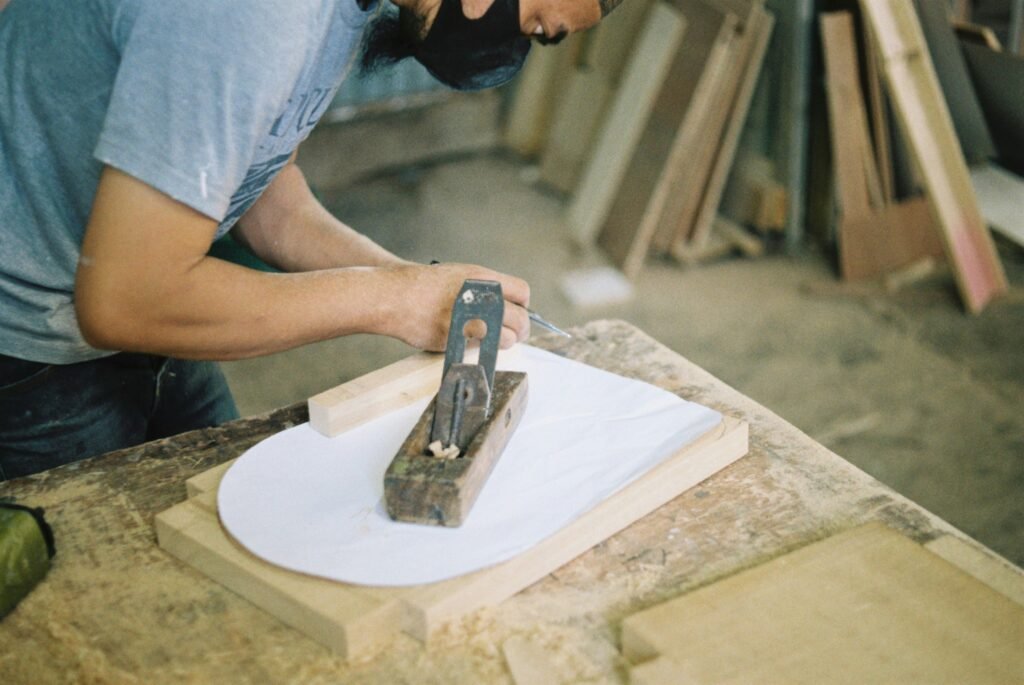In recent years, the trend of DIY and handcrafted items has gained significant traction. Many individuals are increasingly turning to small woodworking projects not only as a fulfilling hobby but also as a means to generate additional income. These projects, which typically require minimal materials and tools, present an excellent opportunity for beginners to explore their woodworking skills while producing marketable items.
Small woodworking projects, such as crafting birdhouses, picture frames, or simple furniture, are ideal for those just starting in the craft. These manageable undertakings allow novice woodworkers to gain hands-on experience, develop their technique, and learn how to utilize various tools effectively. Additionally, they offer the chance to experiment with different types of wood, finishes, and styles, fostering creativity alongside practicality.
The appeal of small woodworking projects lies in their versatility and the growing consumer preference for unique, handmade products. As people increasingly seek out personalized gifts or distinctive home decor items, the market for handcrafted wooden goods is expanding. This provides a promising avenue for beginner woodworkers to not only hone their craft but also engage with a community that values originality and craftsmanship.
Moreover, selecting manageable projects is essential for beginners. Focusing on simpler designs can help build confidence and competence, enabling enthusiasts to gradually take on more complex endeavors. Successful small woodworking projects can lead to increased proficiency, thereby paving the way for future opportunities, whether selling at local markets, setting up an online store, or taking custom orders from friends and family.
Ultimately, small woodworking projects offer an exciting blend of creativity, craftsmanship, and commercial potential, making them an excellent choice for aspiring artisans looking to embark on a profitable journey. Embracing this path can be both rewarding and lucrative as one develops their skills and carves their niche in the woodworking world.
Top 5 Beginner-Friendly Woodworking Projects
If you are new to woodworking and looking for profitable projects, there are several beginner-friendly ideas that not only enhance your skills but also have the potential for marketability. Here are five small woodworking projects that are ideal for novices, enabling them to create appealing products that can be sold with ease.
1. Wooden Coasters: Wooden coasters are simple to make and highly appealing. Using various types of wood, you can craft a rustic or modern design tailored to customer preferences. The tools required are basic, making it an accessible project for beginners. Coasters can be sold individually or as part of attractive sets, which enhances their market appeal.
2. Picture Frames: Making picture frames allows for creativity and personalization. Beginners can start with basic rectangle designs and gradually experiment with different styles and finishes. Picture frames cater to a wide audience, making them easy to sell at craft fairs or online marketplaces.
3. Small Shelves: Constructing small shelves offers practicality and versatility. Whether you opt for a simple wall-mounted shelf or a more complex design, this project helps enhance woodworking skills such as measuring and cutting. Small shelves can be marketable due to their use in home décor, appealing to those looking to organize and beautify their spaces.
4. Decorative Boxes: Decorative boxes serve numerous purposes, from storing small items to acting as decorative pieces. Beginners can easily personalize these boxes with wood-burning techniques or unique finishes, allowing them to cater to different tastes. The demand for unique storage solutions can make this project profitable.
5. Simple Planters: Creating simple planters is an excellent project for those who enjoy gardening or home décor. Beginners can craft wooden planters in various shapes and sizes, appealing to plant enthusiasts. The surge in interest in house plants creates a favorable market for wooden planters, making them a great woodworking project to consider.
Each of these projects is not only feasible for beginners but also serves as an excellent introduction to woodworking while possessing strong market potential.
Choosing the Right Materials and Tools
When embarking on small woodworking projects to sell, the selection of materials and tools plays a pivotal role in ensuring the final product’s quality and attractiveness to potential buyers. For beginners, it is essential to choose materials that are easy to work with and readily available. Softwoods like pine, cedar, and spruce are excellent choices due to their affordability and workability. These types of wood can easily be cut, shaped, and sanded, making them ideal for novice woodworkers. Additionally, hardwoods such as oak, cherry, and maple, while more challenging to work with, can yield outstanding results and command higher prices, making them worthy investments for more advanced projects.
In terms of finishes, the right choice can greatly enhance the beauty and durability of wooden items. Beginners should consider using water-based finishes, which are less toxic and easier to clean up. Options like polyurethane, varnish, or wood oils can provide a protective layer while accentuating the wood’s natural grain. It is advisable to test different finishes on scrap pieces to determine the desired effect and the ease of application.
Regarding tools, starting with a basic set is essential. A good quality saw, chisels, a drill, and a sander are fundamental tools that can handle a variety of projects. As skills develop, one may consider investing in more specialized tools, such as routers or jigsaws, which can open up new project possibilities. Additionally, safety should always be a priority; wearing protective eyewear, gloves, and hearing protection can prevent accidents while using power tools. Adequate ventilation in the workspace is also crucial, especially when working with finishes and adhesives.
Sourcing quality materials at reasonable prices involves shopping at local lumberyards, home improvement stores, and online marketplaces. Comparison shopping can help beginners find the best deals while ensuring the chosen materials meet their project specifications. By selecting the right materials and tools, beginners can create woodworking projects that are not only enjoyable to build but also appealing to potential customers.
Finishing Techniques That Attract Buyers
Finishing techniques are crucial in woodworking, playing a significant role in determining both the aesthetic appeal and marketability of a project. Various methods can be applied to accentuate the natural beauty of wood while providing necessary protection against environmental factors. Among the most popular techniques are staining, painting, and sealing, each offering unique characteristics and benefits.
Staining wood adds depth and richness to its color while highlighting the grain and texture. This technique can vastly transform the appearance of a piece, making it more appealing to potential buyers. When selecting a stain, it is essential to consider the wood type and the desired finish. A lighter stain may enhance softer woods, while a darker stain can create a more dramatic effect on harder woods. Testing the stain on a scrap piece is always advisable to achieve the desired outcome.
Painting is another effective finishing technique that allows for creativity and personalization in woodworking projects. Choosing the right paint can significantly impact the final look. For example, using chalk paint can create a vintage appearance, while high-gloss finishes can impart a modern feel. Ensuring the surface is well-prepared before painting—sanding and priming as needed—will contribute to a smooth and even application, preventing peeling or chipping in the long run.
Sealing, often the final step after staining or painting, is vital for protecting the wood from moisture and wear. Products like polyurethane, lacquer, or oil-based sealants can provide a durable finish that enhances the overall look of the piece. When choosing a sealer, it’s important to consider the intended use of the item, as some sealants are better suited for indoor use, while others are formulated for outdoor projects.
In conclusion, mastering these finishing techniques not only elevates the visual appeal of woodworking projects but also significantly enhances their marketability. By investing time in selecting the appropriate finish, artisans can create standout pieces that genuinely capture potential buyers’ attention.
Setting Competitive Prices for Your Woodworking Projects
Determining appropriate pricing for woodworking projects is crucial for any beginner aiming to turn their hobby into a profitable venture. A well-structured pricing strategy should take into account several essential factors, including material costs, time invested in crafting, pertinent market trends, and competitor pricing strategies.
The first step in establishing a competitive price is calculating the direct costs involved in materials. This includes the cost of wood, finishes, and any hardware required for your projects. Ensure to keep track of these expenses meticulously to gain a clear understanding of the baseline cost for each item. Next, it is imperative to account for the time invested in woodworking. Calculate an hourly wage that reflects your skill level and expertise, multiplying it by the hours spent creating each project. This not only compensates your effort but also adds value to your crafted items.
Market trends also play a significant role in pricing. Research similar products in your target market to see how they are priced. This will provide insight into consumer expectations and purchasing power. Analyzing competitor pricing helps you position yourself appropriately; you may decide to price your items slightly lower to attract buyers or convey higher quality with a premium price. Additionally, being aware of local demand fluctuations can help adjust prices according to prevailing market conditions.
Lastly, calculating profit margins is a critical component of your pricing strategy. After establishing the cost of materials and valued labor, determine a desirable profit margin to ensure your business is sustainable. It is advisable to start with lower margins to attract customers, then gradually adjust prices as your brand recognition improves. Overall, ensuring that your pricing is reflective of both your costs and market insights will facilitate a successful approach to selling your woodworking projects.
Marketing Your Woodworking Creations
Effectively marketing your woodworking creations is crucial in establishing a successful venture and reaching potential customers. One of the first steps in promoting your products is to develop a strong brand identity. This entails creating a memorable name and logo that resonates with your target audience. A well-defined brand can make your projects stand out in a competitive market, allowing customers to easily identify your unique offerings.
In today’s digital age, having an online presence is essential for any small woodworking business. Consider setting up a professional website where you can showcase your creations, share your story as a woodworker, and provide information on how potential buyers can purchase your items. E-commerce platforms like Etsy or Shopify can also be beneficial, offering user-friendly interfaces to sell your handcrafted projects directly to consumers.
Utilizing social media platforms such as Instagram, Facebook, and Pinterest can significantly enhance your visibility. These platforms allow you to share eye-catching images of your woodworking creations, engage with followers, and build a community around your craft. Regularly posting updates and interacting with your audience can foster loyalty and encourage word-of-mouth referrals, which can lead to increased sales.
Participating in local craft fairs and markets is another effective strategy to market your woodworking creations. These events provide an excellent opportunity to connect with potential customers face-to-face, showcase your quality work, and receive immediate feedback. Prepare an attractive booth, allowing visitors to interact with your products, thus enhancing their shopping experience. Furthermore, consider offering business cards or flyers that include your website and social media links to ensure interested customers can easily find you online.
Lastly, when photographing your projects for online listings, ensure that you use well-lit and high-resolution images. Capture your woodwork from various angles and include close-ups to highlight intricate details. A clean background will also help your creations shine, creating a professional image that attracts buyers.
Where to Sell Your Woodworking Projects
When it comes to selling woodworking projects, numerous platforms and avenues exist that cater to different audiences and preferences. Understanding these selling venues’ unique advantages and drawbacks can help woodworkers select the best options for their business models.
Online marketplaces have become increasingly popular among artisans, providing a convenient and vast customer base. Platforms such as Etsy and Amazon Handmade allow woodworkers to showcase their creations, reaching a global audience. Etsy is particularly well-known for handcrafted items, making it an excellent choice for those looking to sell personalized woodworking projects. However, sellers should be aware of the listing fees and commission rates that can affect profit margins.
On the other hand, Amazon Handmade offers the benefit of leveraging Amazon’s extensive logistics and customer service. This platform may attract buyers who are already loyal to Amazon. Nevertheless, competition may be stiff, and woodworkers need to ensure that their offerings stand out for potential customers.
Local craft fairs and community markets provide another avenue for selling woodworking projects, allowing artisans to connect directly with their audience. These events often facilitate a personal touch, giving buyers the chance to interact with makers and appreciate the craftsmanship firsthand. However, participation usually requires the investment of time and resources as well as potential booth fees that may impact overall profitability.
Social media platforms, such as Instagram and Facebook, also serve as valuable tools for promoting and selling woodworking projects. By showcasing items through visually appealing content, artisans can build a dedicated following and convert their audience into customers. Yet, effective marketing strategies must be employed to drive traffic towards sales significantly.
Ultimately, choosing the right platform hinges on each woodworker’s preferences, abilities, and business goals, whether they prioritize ease of use, community interaction, or large-scale outreach. Each channel has its unique features that can align with different woodworking projects and target demographics.
Building a Community and Networking with Other Woodworkers
In the realm of woodworking, establishing a robust community is integral for both personal growth and professional development. Building connections with other woodworkers can provide unique avenues for learning, sharing experiences, and garnering support in various woodworking projects. Engaging with a broad network enhances not only skill but also the business acumen essential for selling profitable woodworking items.
One effective approach to foster relationships is through participation in local woodworking clubs. These clubs often host regular meetups, workshops, and exhibitions where members can showcase their work, exchange ideas, and offer constructive feedback. While face-to-face interactions are invaluable, online platforms play a pivotal role in expanding a woodworker’s reach. Websites dedicated to woodworking forums offer spaces for individuals to ask questions, seek advice, and discover new techniques and project ideas. Such engagement enriches the woodworking experience by connecting novices with seasoned professionals who can lend insight and expertise.
Furthermore, social media groups designed specifically for woodworkers present an excellent opportunity for networking. Platforms such as Facebook and Instagram not only allow woodworkers to showcase their projects but also facilitate discussions among peers. Sharing pictures of completed small woodworking projects can inspire others and even result in collaborative ventures. Through these channels, woodworkers can gain feedback, discover trends, and learn about the latest tools and materials that may impact their craft.
Ultimately, networking within the woodworking community serves as a catalyst for both personal fulfillment and business success. By actively engaging with others, woodworkers can strengthen their skills, expand their resources, and cultivate relationships that could lead to future collaborations or sales opportunities. This sense of community can make the woodworking journey more enjoyable and profitable.
Conclusion: Turning Passion into Profit
Engaging in small woodworking projects can serve as a rewarding venture for individuals looking for both a creative outlet and a means of generating income. The diverse range of profitable ideas explored throughout this blog post demonstrates that woodworking is not solely reserved for seasoned artisans; rather, it offers a welcoming entry point for beginners wishing to explore their crafts. From crafting birdhouses to designing unique home décor, the prospects within the woodworking realm are abundant.
As highlighted, starting with manageable projects allows novice woodworkers to build their skills while producing items that have market appeal. This gradual development aids in gaining confidence and expertise, fostering an enriching experience that can lead to further creative exploration. Moreover, the satisfaction derived from creating handmade items cannot be understated. The craftsmanship involved not only enhances personal skills but also contributes to a deeper connection with the art of woodworking.
Encouragement is essential for those contemplating their venture into woodworking. By leveraging the ideas provided, aspiring woodworkers can begin their journey with enthusiasm and a clear vision of profitability. Each project offers the possibility to innovate and personalize, ensuring that the products stand out in the marketplace. Additionally, the potential for connecting with customers who appreciate handmade quality can be gratifying, adding to the overall experience of creating wood projects.
In conclusion, woodworking is a practical and enjoyable pursuit that yields not only personal fulfillment but also attractive profit opportunities. Embracing this craft can lead to the development of both creativity and skilled craftsmanship, motivating numerous individuals to transform their passion for woodworking into a successful business endeavor. Whether for personal enjoyment or to generate income, the journey into woodworking promises to be both fruitful and fulfilling.



